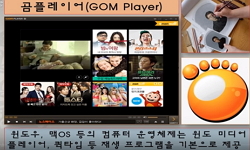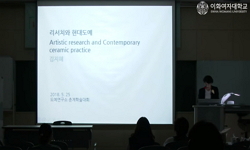레이어는 조형 예술에서 단순한 시각적 요소를 넘어 다양한 매체와 예술적 표현의 중요한 개념으로 자리 잡고 있다. 재료와 기법에 따라 다른 조형적 특성을 갖고 있으며, 구조적 안정성과 ...
http://chineseinput.net/에서 pinyin(병음)방식으로 중국어를 변환할 수 있습니다.
변환된 중국어를 복사하여 사용하시면 됩니다.
- 中文 을 입력하시려면 zhongwen을 입력하시고 space를누르시면됩니다.
- 北京 을 입력하시려면 beijing을 입력하시고 space를 누르시면 됩니다.

레이어의 조형적 특성과 표현 방식 비교 연구 -조형 예술과 도예를 중심으로- = A Comparative Study on the Formative Characteristics and Expressive Methods of Layers –focused on formative arts and ceramics-
한글로보기https://www.riss.kr/link?id=A109785273
- 저자
- 발행기관
- 학술지명
- 권호사항
-
발행연도
2025
-
작성언어
Korean
-
주제어
layer ; formative art ; contemporary ceramics ; formative characteristics ; expressive methods ; 레이어 ; 조형 예술 ; 현대 도예 ; 조형적 특성 ; 표현 방식
-
등재정보
KCI등재
-
자료형태
학술저널
- 발행기관 URL
-
수록면
545-558(14쪽)
- 제공처
-
0
상세조회 -
0
다운로드
부가정보
국문 초록 (Abstract)
레이어는 조형 예술에서 단순한 시각적 요소를 넘어 다양한 매체와 예술적 표현의 중요한 개념으로 자리 잡고 있다. 재료와 기법에 따라 다른 조형적 특성을 갖고 있으며, 구조적 안정성과 공간적 관계를 조율하는 요소로도 영향을 미친다. 본 연구는 평면, 입체, 공간 매체를 대표하는 회화, 조각, 건축과 도예를 중심으로 레이어의 조형적 특징과 표현방식을 비교·분석하고, 각 예술 분야에서 레이어가 형성되는 방식과 조형적 역할의 차이를 연구하는 것을 목적으로 한다. 연구 방법으로는 첫째, 문헌 연구와 사례 분석을 통해 조형 예술에서 나타나는 레이어의 조형적 특성과 표현 기법을 조사하였다. 둘째, 현대 도예 작가들의 레이어 작품을 선정하여 분석함으로써, 도예에서 레이어가 어떻게 구성되고 활용되고 있는지를 살펴보았다. 이를 바탕으로 도예에서의 레이어가 다른 예술 분야와 비교했을 때 어떠한 차이가 있는지를 분석할 수 있었다. 도예의 레이어는 재료와 기술의 상호작용 속에서 작가의 개성이 표현되며 건조 및 소성 과정에서 발생하는 물리적 변형은 층위 간 경계를 불규칙하게 만들거나 예측할 수 없는 형태를 형성한다. 또한 점토와 유약의 화학 반응은 색상 변화와 표면의 질감 차이를 만들어 소성 온도와 유약 성분에 따라 그 결과가 다양하게 나타난다. 특히 중첩, 적층, 투각, 절단 등의 기법은 내부와 외부를 연결하는 구조를 형성하고 공간감과 입체감을 강조하는 역할을 한다. 이러한 결과를 통해 도예에서 레이어는 조형 실험과 제작 기법의 확장을 토대로 예술적 표현 매체로서 앞으로도 지속적으로 발전할 가능성을 지니고 있음을 확인하였다. 향후 연구에서는 점토와 유약 외에도 금속, 유리, 디지털 가공 기법 등을 활용한 실험적 시도를 통해 레이어의 표현 방식과 조형적 활용 범위가 더욱 확대될 수 있기를 바란다. 이를 통해 도예에서의 레이어 개념이 발전하고 학문적 논의에서 새로운 방향을 제시하는 계기가 되기를 기대한다.
다국어 초록 (Multilingual Abstract)
Layers in formative arts are not merely visual elements but serve as a key concept across various media and artistic expressions. They develop distinct formative characteristics depending on materials and techniques, functioning as both a structural s...
Layers in formative arts are not merely visual elements but serve as a key concept across various media and artistic expressions. They develop distinct formative characteristics depending on materials and techniques, functioning as both a structural stabilizer and a regulator of spatial relationships. This study compares layers across four formative art fields—painting, sculpture, architecture, and ceramics—each corresponding to two-dimensional, three-dimensional, and spatial media. It aims to compare and analyze the formative characteristics and expressive methods of layers across these fields, examining their structural roles and visual functions. The research was conducted through a combination of literature review and case analysis. First, it investigates the formative characteristics and expressive methods of layers in formative arts through conceptual and theoretical studies. Second, it examines how layers are utilized in contemporary ceramics by analyzing selected works of contemporary ceramic artists and identifying distinctions between ceramics and other artistic fields. The findings reveal that in ceramics, layers express the individuality of the artist through the interaction of materials and techniques. Physical transformations occurring during drying and firing processes create irregular and unpredictable boundaries between layers. Furthermore, chemical reactions between clay and glaze result in variations in color and surface texture, depending on firing temperatures and glaze composition. Techniques such as overlapping, stacking, piercing, and cutting contribute to forming structures that connect internal and external spaces, thereby enhancing spatial depth and dimensionality. These results suggest that layers function as a key element for expanding both the scope of formal experimentation and production methods in ceramics. Future research is expected to expand the expressive and formative applications of layers through experimental approaches that incorporate various materials such as metal, glass, and digital fabrication techniques. Such studies will contribute to the ongoing development of ceramic layering practices and suggest new directions for academic inquiry in the field.
동일학술지(권/호) 다른 논문
-
24-25 시즌프리미어리그 중계채널 동적 스코어보드의 다층적 문화 요소와 동적 표현 방식 연구 -득점 순간 표현을 중심으로-
- 한국기초조형학회
- 왕샤오웨이
- 2025
- KCI등재
-
- 한국기초조형학회
- 리우양
- 2025
- KCI등재
-
국내 아파트의 시대적 실내구성과 마감재 변화에 관한 연구 -2000년대 이후 사례 중심으로-
- 한국기초조형학회
- 서진희
- 2025
- KCI등재
-
거리에 접한 건물의 경계공간개념과 평가요소의 정리에 관한 연구
- 한국기초조형학회
- 구풍
- 2025
- KCI등재




 KCI
KCI DBpia
DBpia






